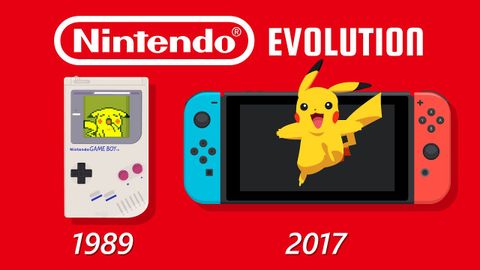任天堂手持设备的演变(Evolution of Nintendo Handhelds (Animation))
joey joey 發佈於 2021 年 05 月 28 日  沒有此條件下的單字
沒有此條件下的單字US /ˈmʌltəpəl/
・
UK /ˈmʌltɪpl/
- adj.多重的;多種的;多發性的;多重的
- n. (c.)多;多個的;乘數
- pron.多重的
US /ɪmˈpruv/
・
UK /ɪm'pru:v/
US /ˌrɛprɪˈzɛnt/
・
UK /ˌreprɪ'zent/
- v.t.具象派的;象徵;表示;代表(政府機關);當...代表
- adv.粗略地;粗暴地;草率地;粗魯地;大致地;近似地;粗略地

